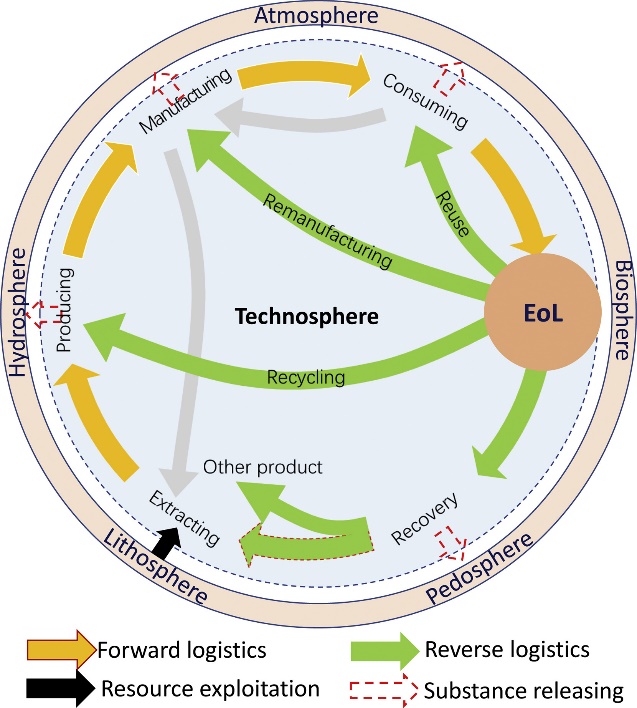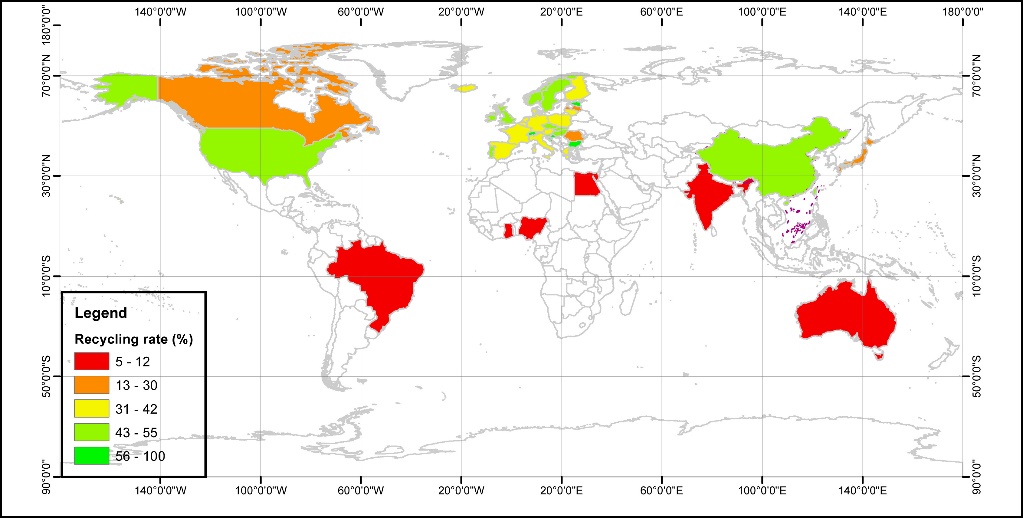SOE, Tsinghua, March 12th, 2021 (correspondent: Zeng Xianlai) Recently, the team of circular economy and urban mining in the School of Environment published a summary article titled "Emerging anthropogenic circularity science: principles, practices, and challenges" in the iScience journal. The article systematically outlines the framework of anthropogenic circularity science from the interdisciplinary of green chemistry, supply chain, industrial ecology, and geochemistry, namely the three laws of anthropogenic circularity science (principle of material abundance, principle of circularity orientation, and principle of zero emission) to evaluate the practices of human material circulation, such as urban mining development, circular economy, and the construction of zero-waste city, and point out the challenges and directions in this field.

Humankind has entered the Anthropocene stage, where the overexploitation, rough use and extravagant consumption of resources have not only brought about the depletion of resources but also caused serious ecological and environmental problems. Material metabolism drives resources from the natural geological cycle into the Anthropocene cycle, and material metabolism includes both forward logistics (resource extracting - primary production - manufacturing - consuming) and reverse logistics (reuse - remanufacture - recycle - recovery). In the process of material metabolism, the release or leakage of substances occurs, which enters the natural geological cycle and causes environmental pollution, while generating a huge amount of solid waste.
Disciplines like Environmental science, earth science, green chemistry, industrial ecology, and supply chain is seeking to discover solutions to resource and environmental sustainability from different perspectives. This article proposes the science of human circulation from a multidisciplinary perspective with the whole life cycle material flow as the core perspective, points out its boundary conditions and the three laws of circularity science, and links the material metabolic circularity as a whole from macro, meso and micro perspectives, which is of great theoretical significance and application value in the fields of circular economy and solid waste management.

Global Distribution of E-waste Recycling Rate
This study was supported by the National Natural Science Foundation of China under the Major Research Program, the National Key R&D Program for Solid Waste, and the National Development and Reform Commission. Associate Professor Zeng Xianlai and Professor Li Jinhui from School of Environment, Tsinghua University completed the research and served as corresponding authors.
Link to paper: https://www.cell.com/iscience/fulltext/S2589-0042(21)00205-4





